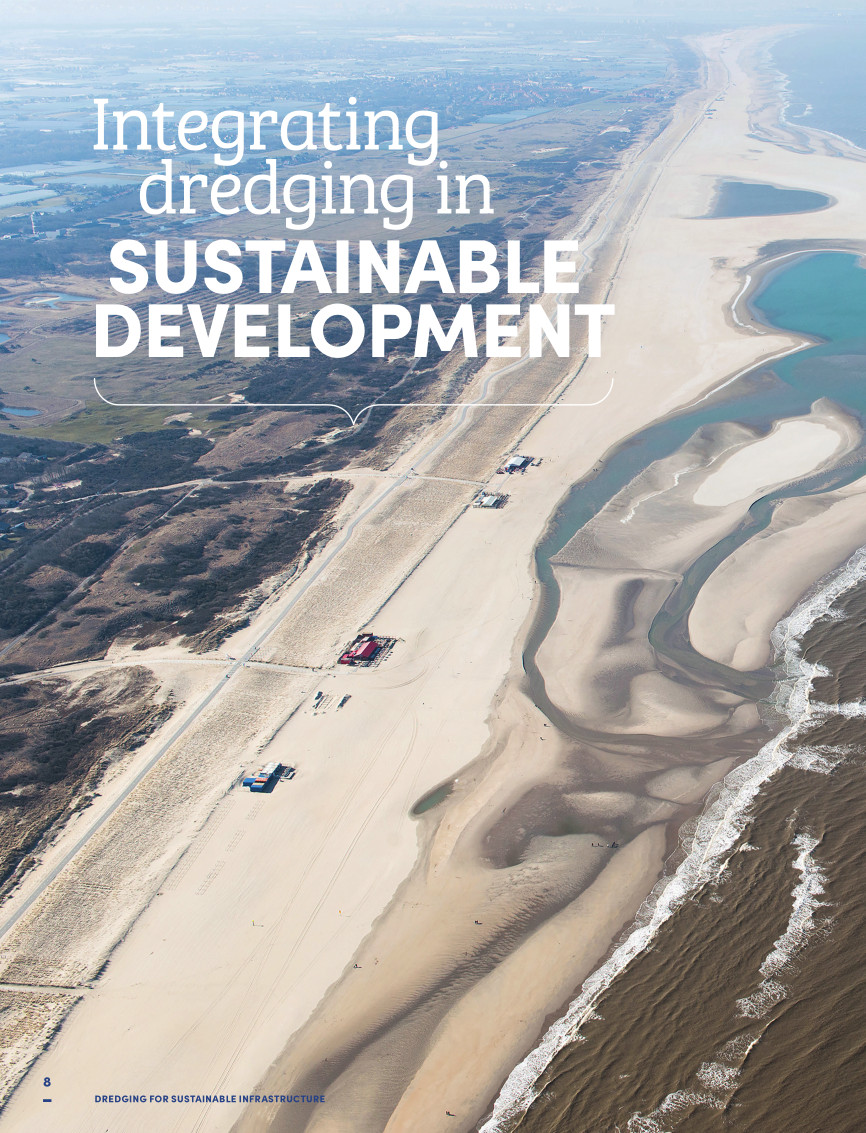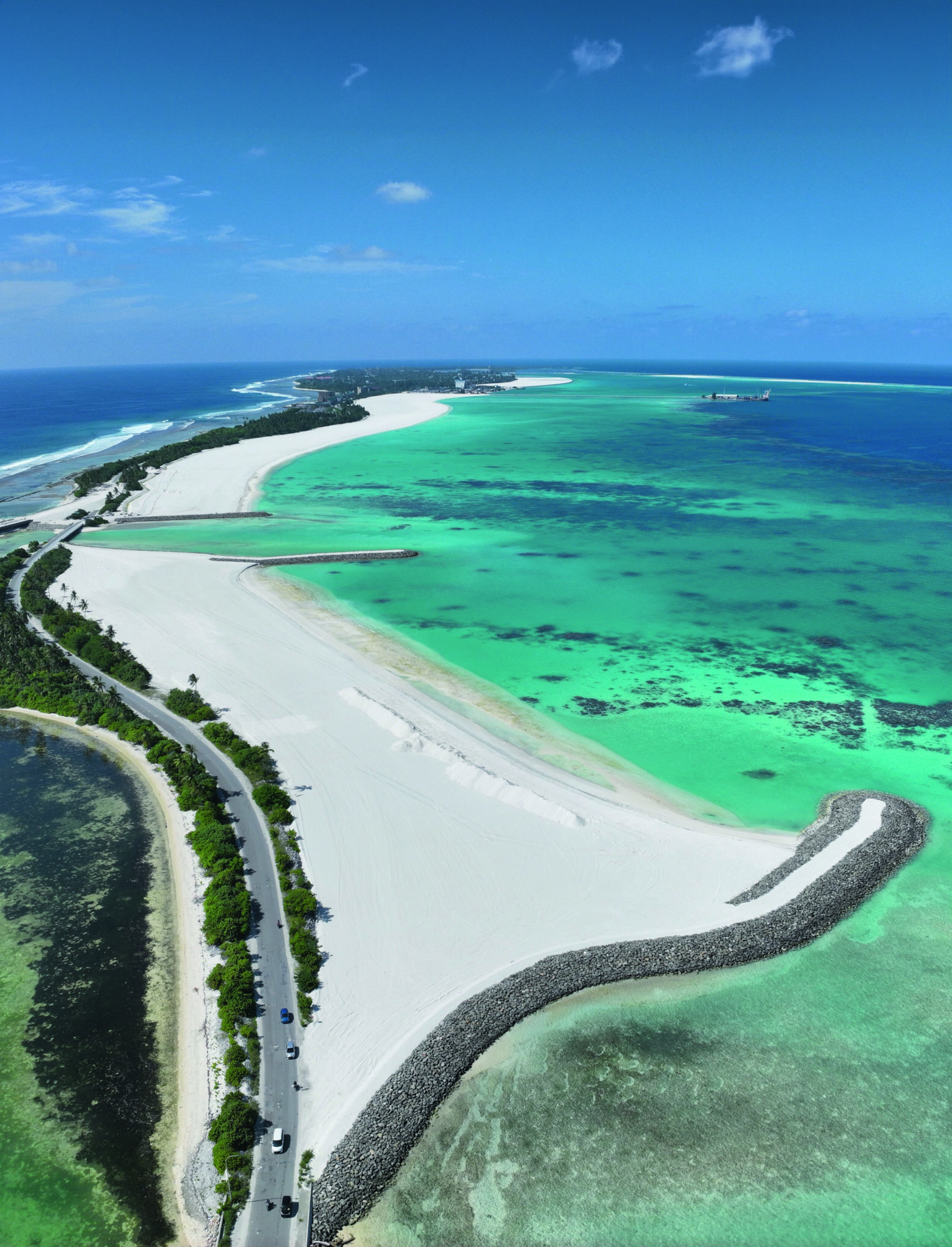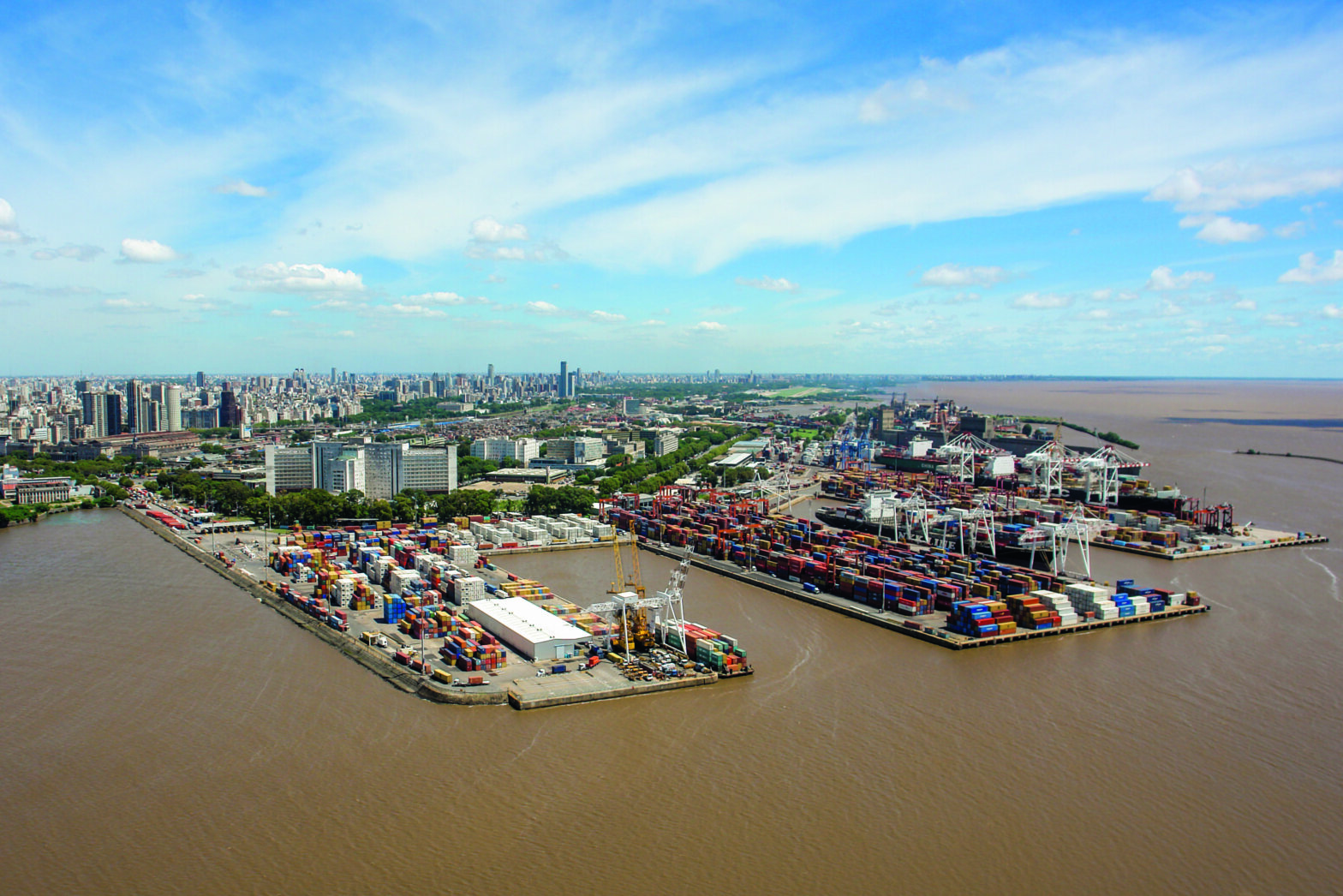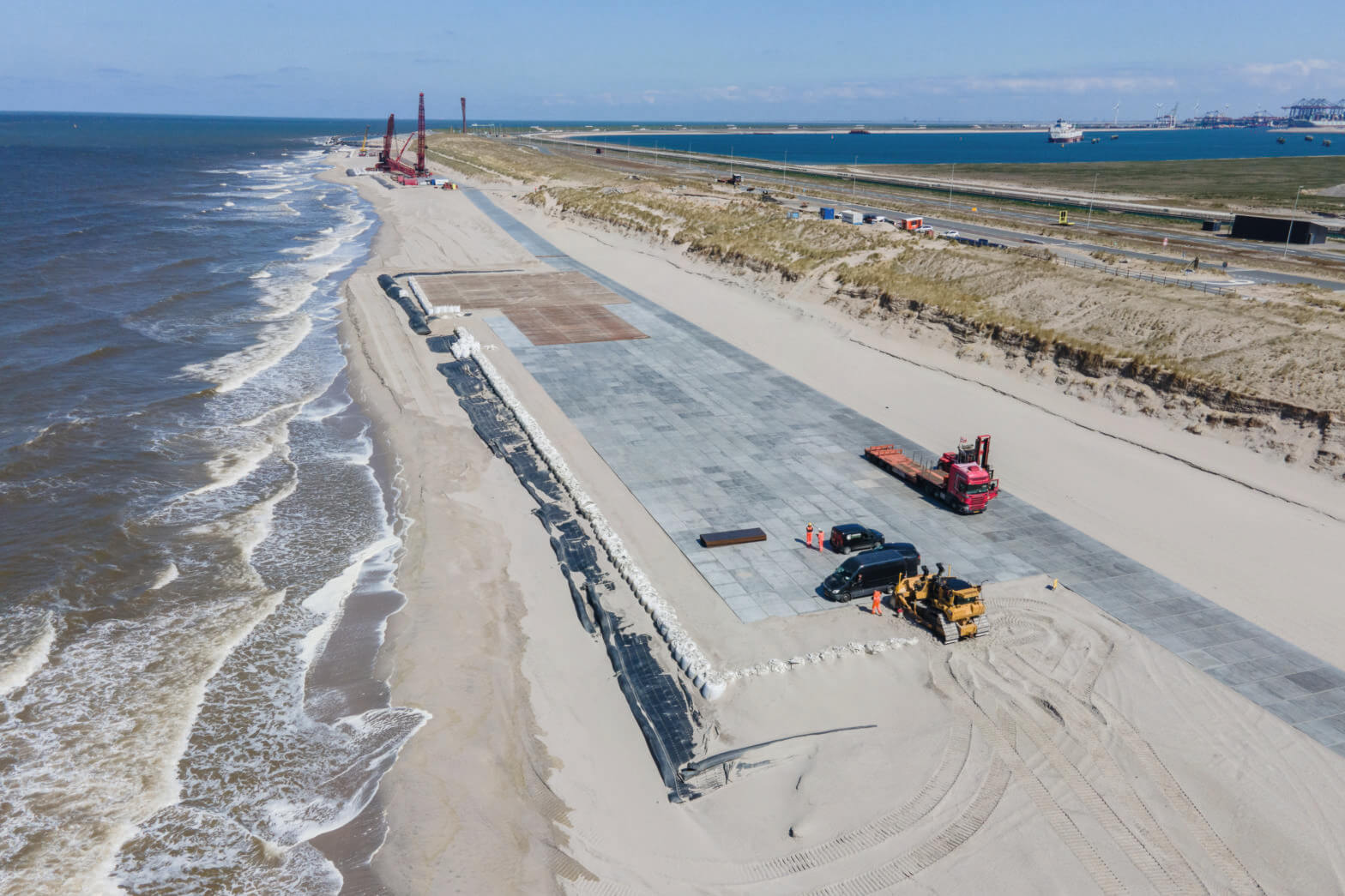
INTEGRATING DREDGING IN SUSTAINABLE DEVELOPMENT
Adapted from the second chapter of Dredging for Sustainable Infrastructure (2018), this article forms the foundation for this first issue and presents the concept of sustainability in relation to dredging projects. It describes the approaches and practices that are key to creating more sustainable solutions and infrastructure – a modern way of thinking about dredging.

Environmental management and mitigation measures: Addu City project
Dredging and reclamation projects can significantly impact local ecosystems. Negative impacts can be minimised by adopting proper environmental management and mitigation, from preparation to completion phase. Addu City project sets an example of implementing novel construction methodologies and successfully addressing environmental challenges. The project has created over 200 hectares (ha) of climate resilient land for housing and touristic development. Enclosure of footprints, relocation of corals and seagrass (at pilot level) before reclamation process, and monitoring sediment impact in the nearby marine protected areas during dredging and reclamation are exemplary of the management approach applied to ensure minimisation of potential negative environmental impacts.

An efficient tool for environmental control in dredging operations
Environmental management and monitoring programmes are essential for identifying and mitigating adverse impacts that dredging activities may have on the environment. However, it is not always feasible, especially for the client, to have the necessary tools to conduct these tasks adequately, whether due to cost constraints or limited information availability. The use of the Automatic Identification System (AIS), as an efficient and cost-effective monitoring method in dredging projects, can lead to significant improvements in project environmental management. In cases involving trailing suction hopper dredgers (TSHD), this tool allows for equipment tracking, verifying the proper use of contract-approved areas and additionally estimating daily production values through a simplified method.

2D effects on dune erosion at maasvlakte 2
Dune erosion due to storm surges and severe wave attack is the primary failure mechanism of sandy sea defences. At a curved coastline, dune erosion is greater than at a straight coastline. However, how much higher is often difficult to predict. This article presents a comparison of field observations and model results of the response of the Maasvlakte 2 curved sandy sea defence to storm attack.

Integrating dredging in sustainable development
The paper Integrating dredging in sustainable development outlines the philosophy and concepts of sustainability and its application to water infrastructure projects focusing on practical issues for dredging.

IADC presents paper “Sand as a resource: Best practices to conduct responsible dredging projects”.
IADC presents paper “Sand as a resource: Best practices to conduct responsible dredging projects”. It presents best practices for optimal use of scarce sand resources, on both project and operational levels. Every stage of a project presents opportunities to increase the sustainability of sand extraction.

Sand as a Resource
The paper Sand as a resource: Best practices to conduct responsible dredging projects presents best practices for optimal use of scarce sand resources, on both project and operational levels. Every stage of a project presents opportunities to increase the sustainability of sand extraction.

Balancing project progress and limited system knowledge in Amatique Bay
The development of a new marine project demands a system approach in which all aspects, including technical, economic, environmental and social, are considered and integrated equally and at an early stage. While insufficient information may be available to make informed decisions, choices need to be made to progress a project, assess impacts and risks, and engage stakeholders. This article explores the case of a new port terminal in Amatique Bay, Guatemala. A method was developed to assess, at an early stage, the potential negative impacts on seagrass habitats from the disposal of dredged material at different locations, while having limited real-time and location-specific information at hand.

